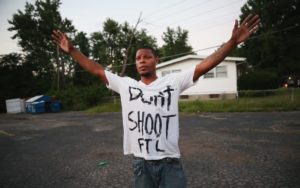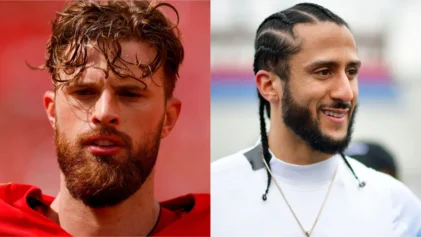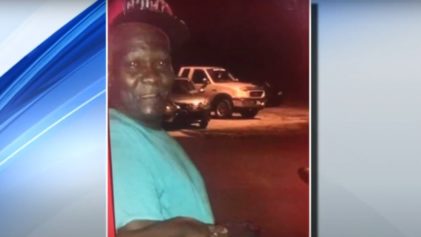
According to the study, young Black men are perceived to be stronger and more dangerous compared to young white men. Photo by Scott Olsen/Getty Images.
White people perceive young African-American men to be heavier, stronger and more dangerous than young white men of similar size, according to a newly released study.
The new research, published by the American Psychological Association Monday, March 13, also revealed that participants felt police were more justified in wielding force against Black people rather than white ones.
Researchers, led by Montclair State University scientist John Paul Wilson, Ph.D, suggested the findings might help explain why Black men are more likely to be shot by police and shed light on the “disturbing consequences” of how law enforcement officials interact with African-American men and boys.
“Unarmed Black men are disproportionately more likely to be shot and killed by police, and often these killings are accompanied by explanations that cite the physical size of the person shot,” Wilson said. “Our research suggests that these descriptions may reflect stereotypes of Black males that do not seem to comport with reality.”
Wilson and his team of scientists ran a series of experiments involving more than 950 online participants, during which they were shown a number of photos featuring the faces of African-American and white males who were equal in both height and weight, according to the study. Participants were then asked to guesstimate the height, weight, strength and overall muscular build of the men pictured.
Researchers soon made the concerning realization that the estimates for these areas were consistently biased. For instance, in one experiment where participants were shown equally sized bodies labeled either Black or white, they were more likely to perceive the Black ones as taller or heavier. Men who had stereotypical Black facial features (a wide-set nose, fuller lips, etc.) also were viewed as stronger and more capable of causing harm in a hypothetical altercation, the study revealed. Such biased perceptions of a Black male’s strength even led some participants to believe police were more warranted to use force against Black people.
In the study, researchers cited the case of Dontre Hamilton, a mentally disabled Black man who was shot and killed by police in 2014 after an officer fired his gun at least 14 times. The officer, Christoper Manney, described 31-year-old Hamilton as a man of “muscular build” who could’ve easily overpowered him. In actuality, Hamilton was only 5’7″ and 169 pounds.
This same bias was apparent in the fatal shooting of 12-year-old Tamir Rice in Cleveland, who was described as a Black “man” playing with a gun in a park.
Size bias wasn’t just consistent among white participants, however. Some Black participants held the bias, as well. While African-Americans saw Black males as bigger and more muscular than young white men, they didn’t perceive them to be more dangerous or deserving of force, according to the research.
While the study’s findings suggest that misperceptions about Black men’s size could possibly play a role in police decisions to shoot, Wilson cautioned that the research does not simulate “real-world threat scenarios,” adding that further studies need to be conducted on how racial bias affects lethal encounters with police.


